74 Diptera – Brachycera – Muscomorpha
All of the remaining Diptera families that we cover are members of the Infraorder Muscomorpha, or Cyclorrhapha. They all have an inverted horseshoe-shaped suture on the front of the face. This suture allows the expansion of the ptilinum, a structure that helps to break open the puparium when the adult fly emerges. All members also have aristate antennae.
Tephritidae
There are numerous economically important species in the Tephritidae, or fruit flies. Their larvae commonly mine in fruits: e.g. the apple maggot fly, Rhagoletis pomonella, and the cherry fruit fly, Rhagoletis cerasi. During oviposition, adult females frequently mark fruits with a pheromone so that other females do not oviposit into the same fruit. Some species have wing markings that mimic jumping spiders.
Tephritidae do not have a greater ampulla. Family identification will require you to look at the details of wing venation.
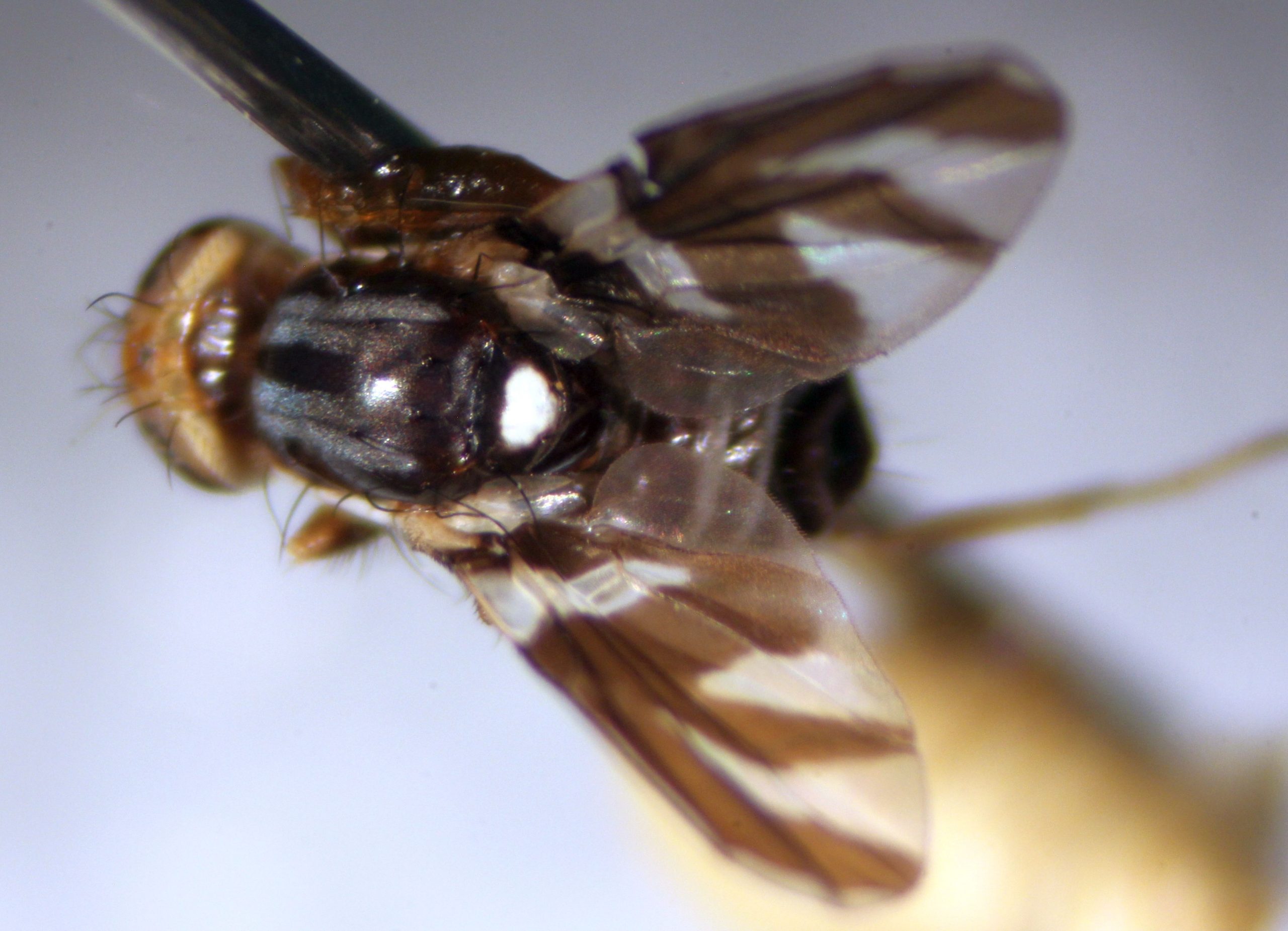
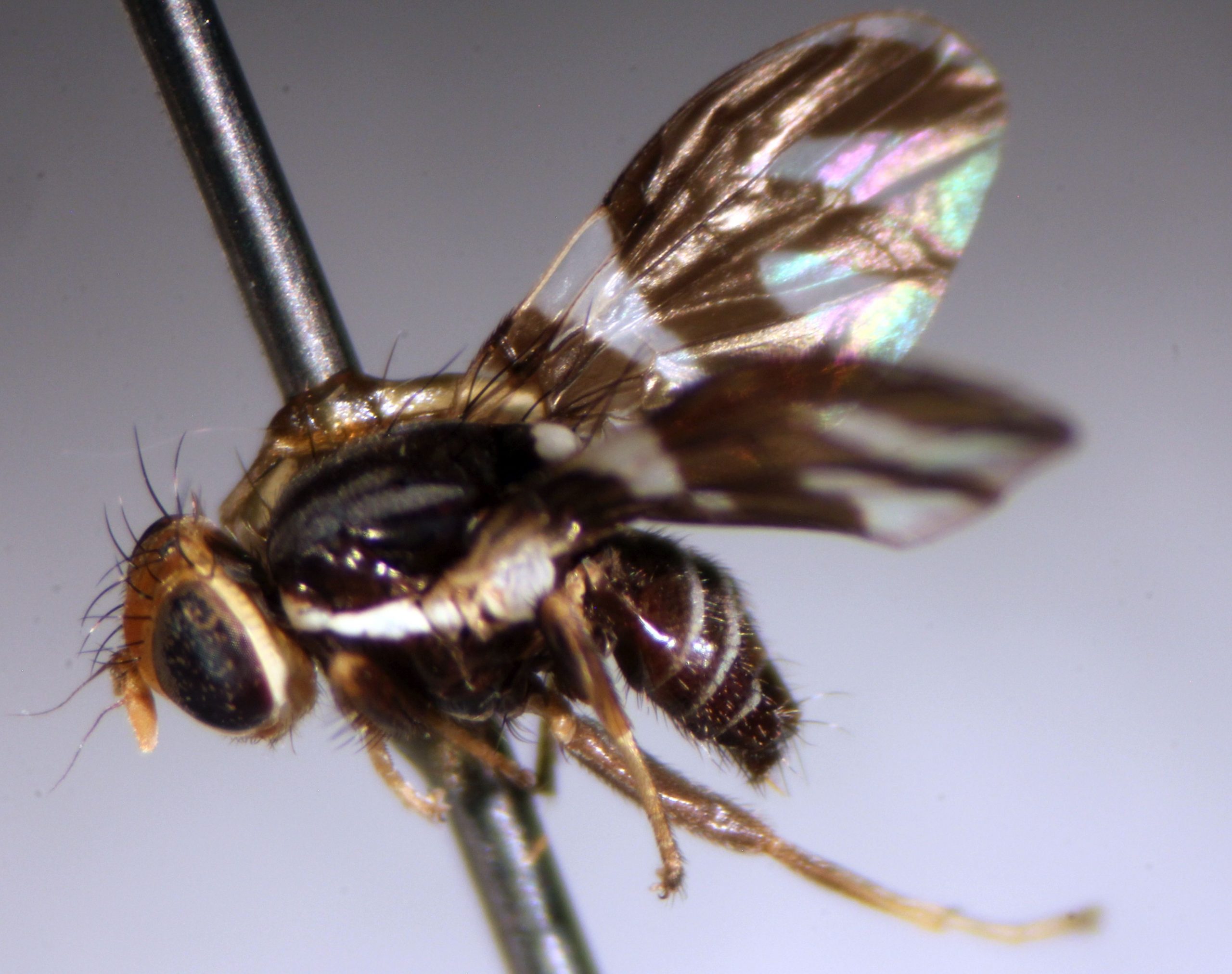
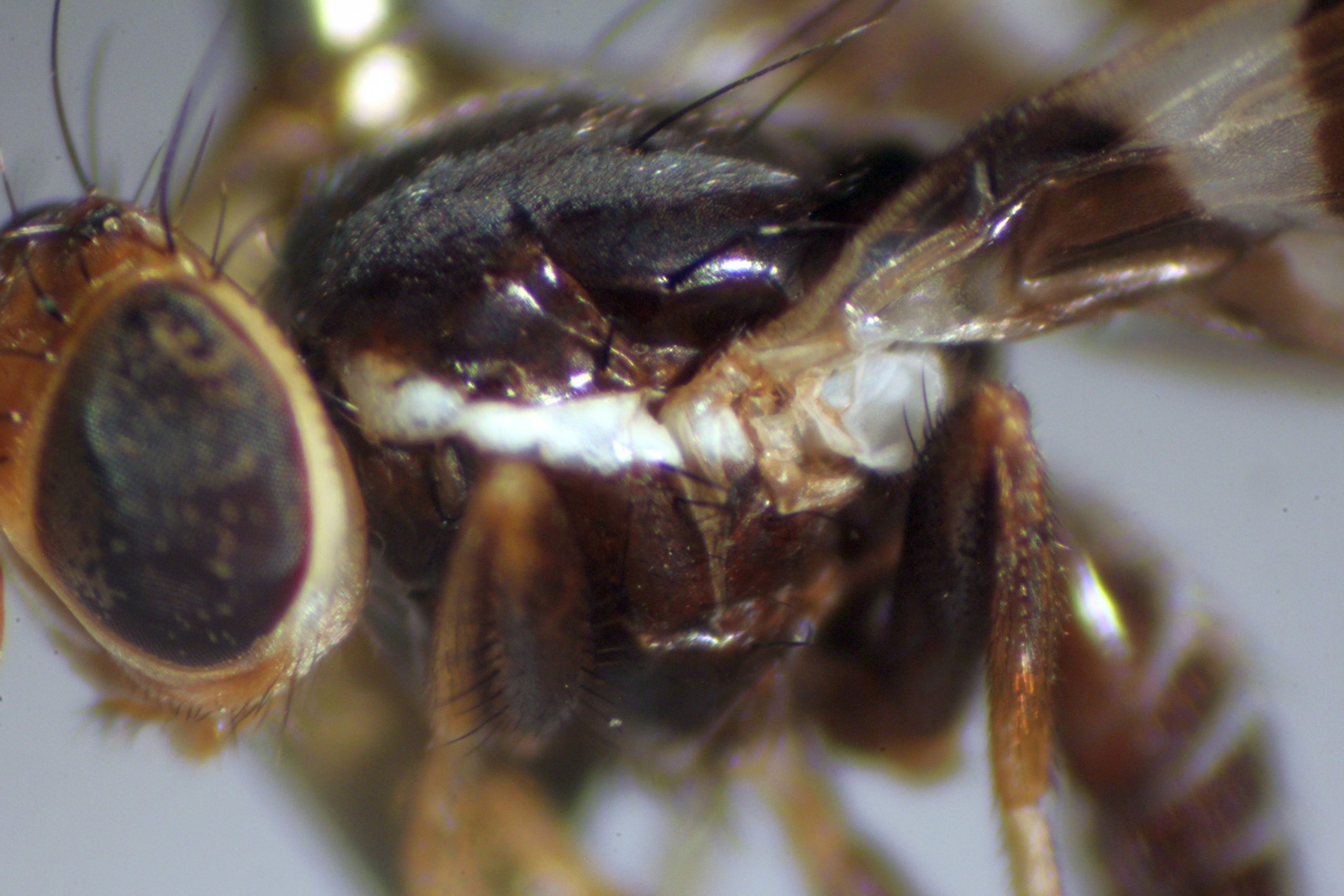
Drosophilidae
Drosophilidae are the small fruit flies, and this family includes Drosophila (=Sophophora) melanogaster, of genetic research fame. They are a distinct and distinguishable family from Tephritidae, but you will need some practice and a careful eye to separate the two families reliably. Also included in this family is an increasingly economically important species introduced to BC, Drosophila suzukii, the spotted wing drosophila. The species lays its eggs in various cultivated and wild small fruits, making them mushy and unappetizing to humans. The larvae even survive composting.
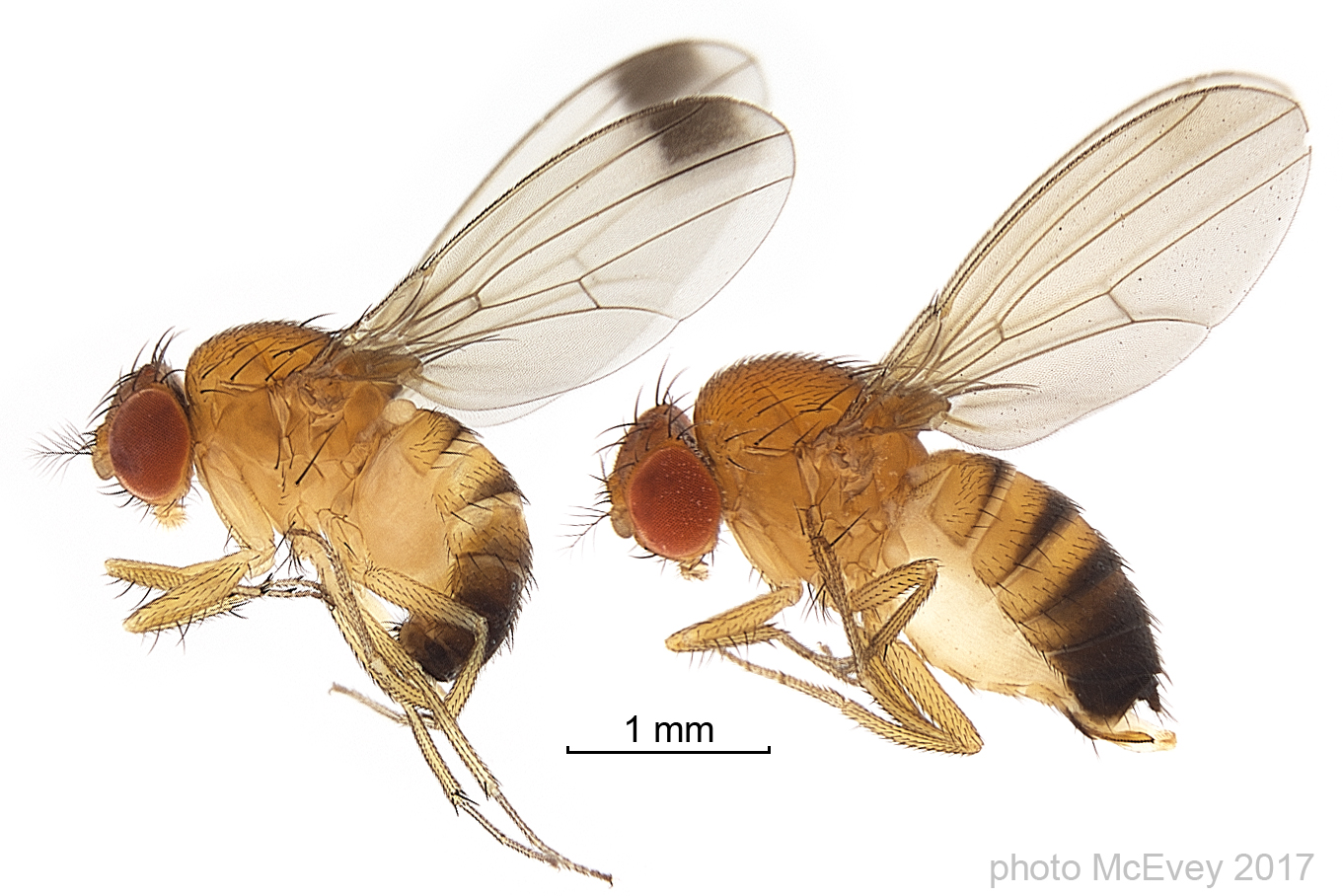
Shane F. McEvey, Australian Museum, CC BY 4.0 <https://creativecommons.org/licenses/by/4.0>, via Wikimedia Commons
Muscidae
Muscidae are the muscid flies (pronounced musk-id), house flies, or stable flies. The best-known species is Musca domestica, the common house fly. Many members of this family are of ecological importance as decomposers, while others have medical and veterinary importance. The family also includes the tsetse, a vector of sleeping sickness (a form of trypanosomiasis).
Adults have a greater ampulla, but lack a row of bristles on the meron. The arista of the antenna is plumose.

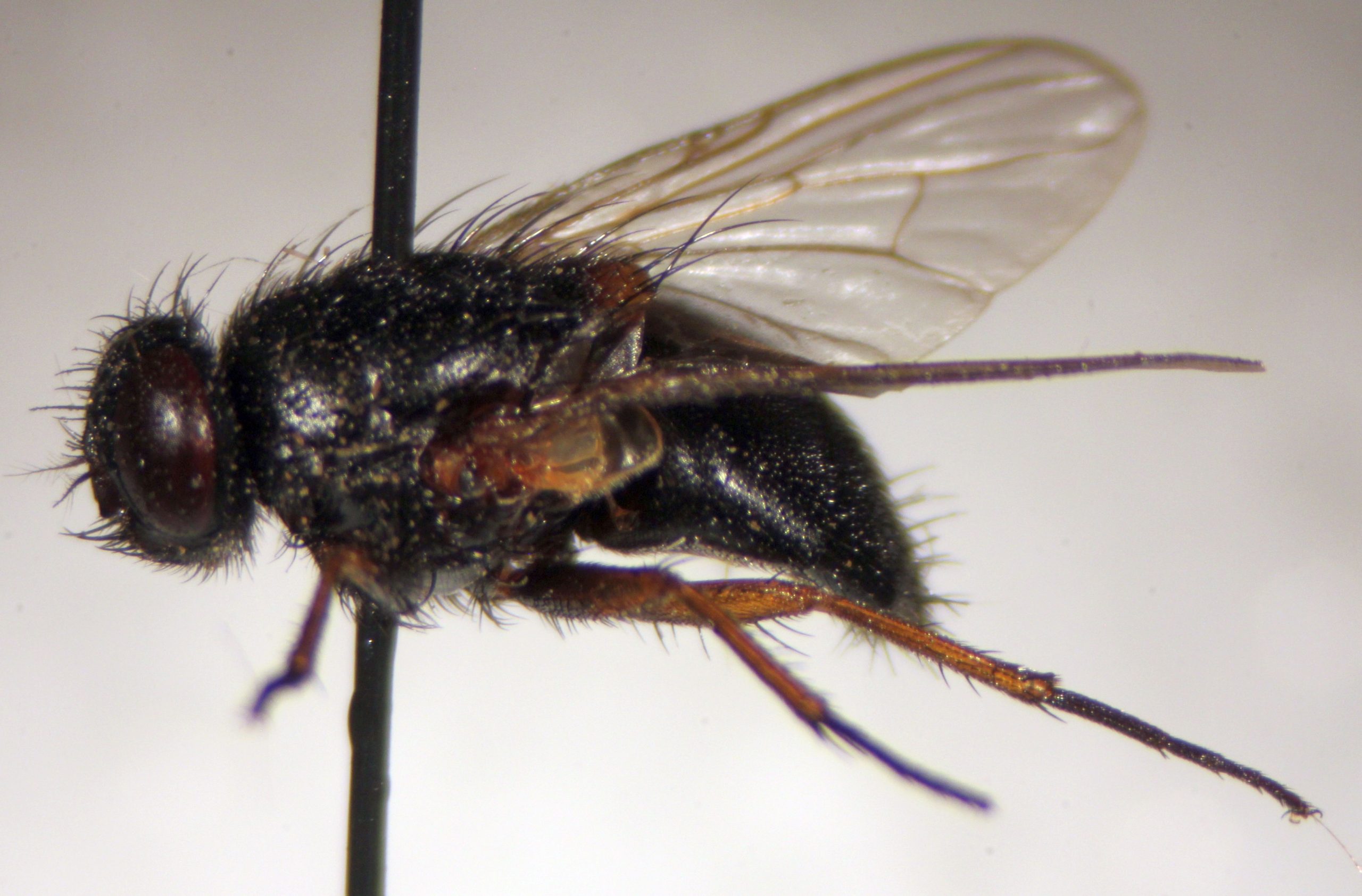
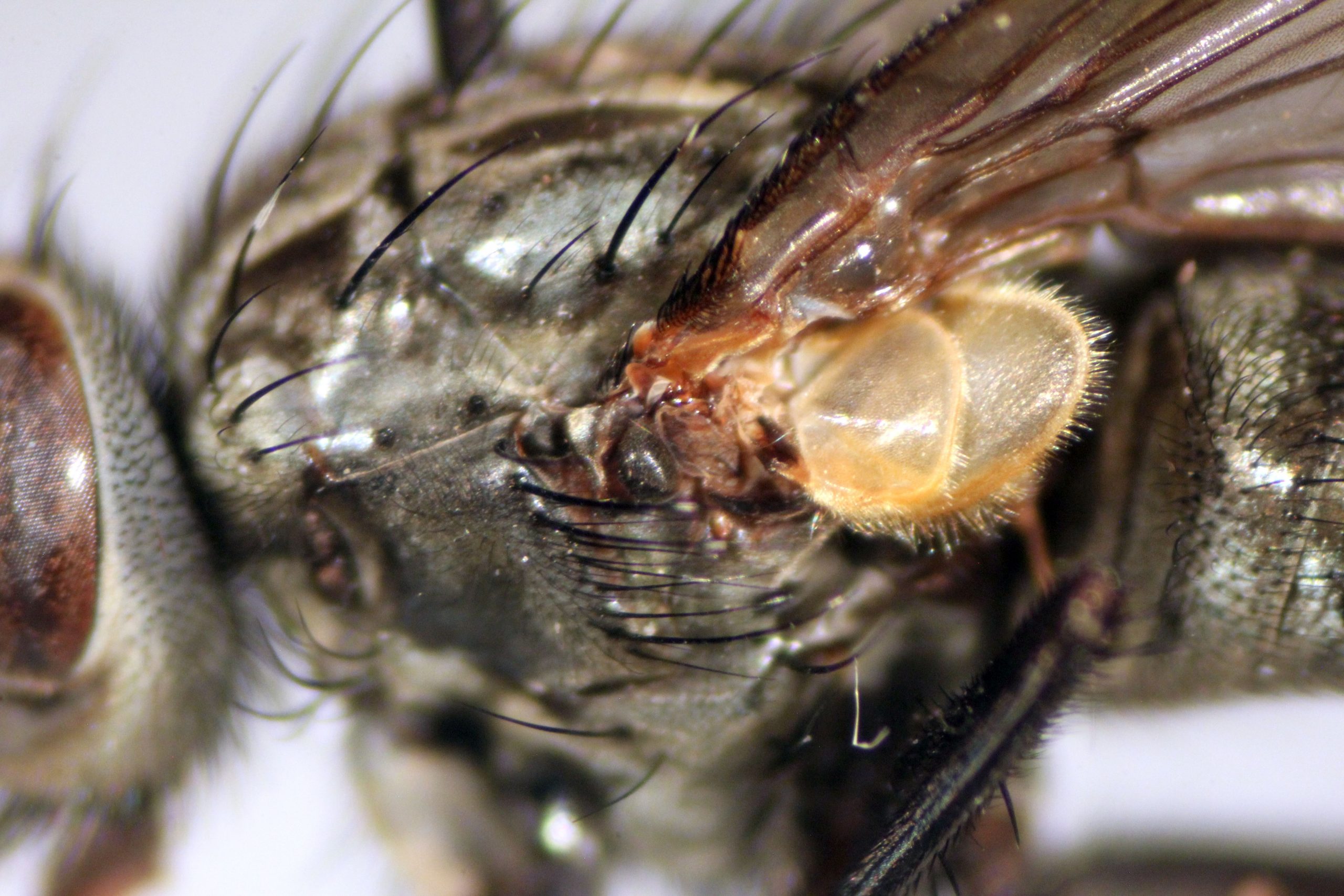
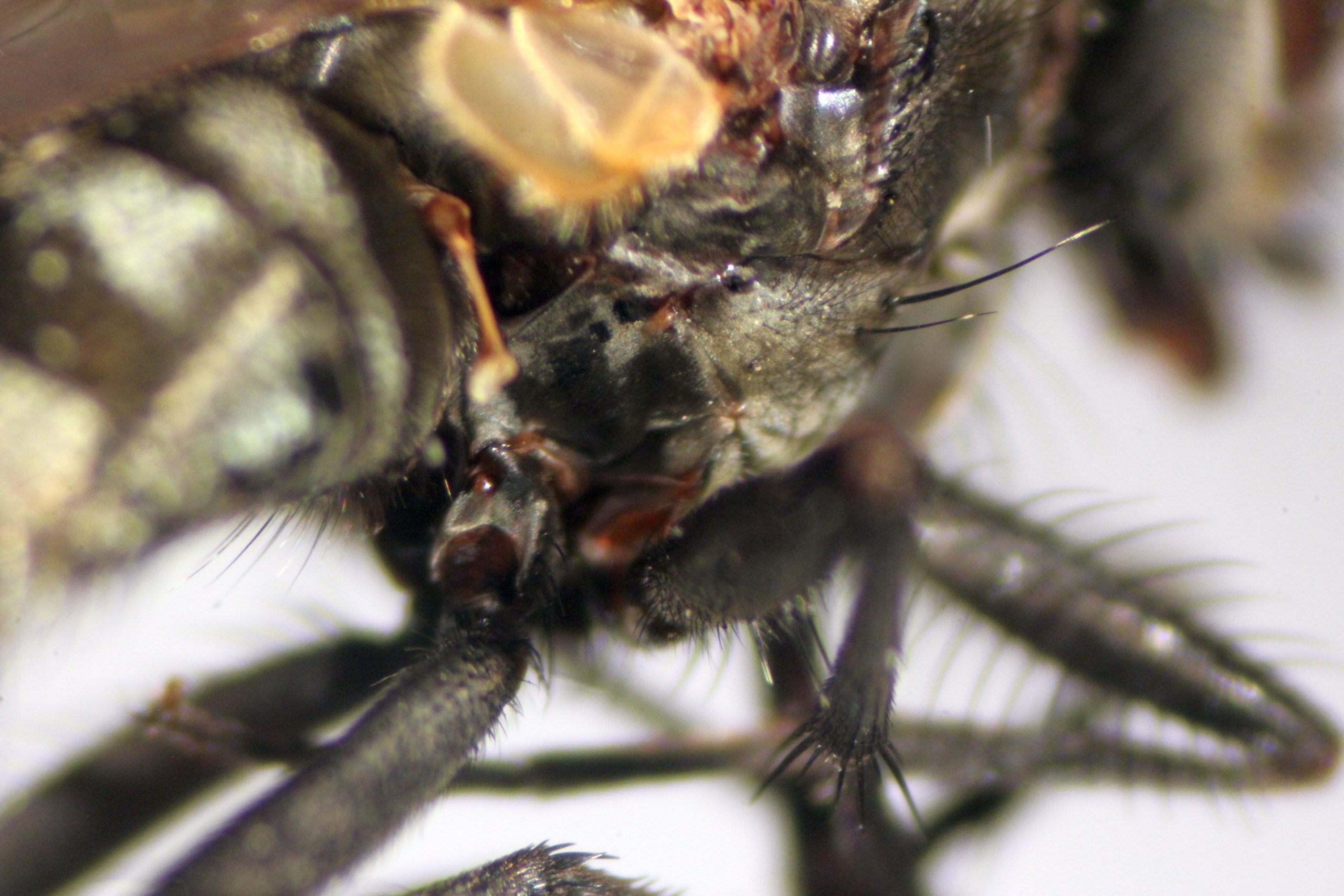
Calliphoridae
Calliphoridae are the blow flies. Almost all have metallic colouration, especially on the abdomen, as adults, and many are called “bottles”: e.g. blue bottle flies, or green bottle flies. Most larvae feed on carrion or dung, but a few species have parasitic larvae. Protocalliphora spp. are important blood-feeders on hatchling birds in their nests. Cochliomyia hominivorax, the New World screwworm fly, is another economically-important fly in this family. Other members of this family are important in maggot therapy, and as forensic indicator species.
Note that adults in this family have both a greater ampulla and a row of bristles on the meron.
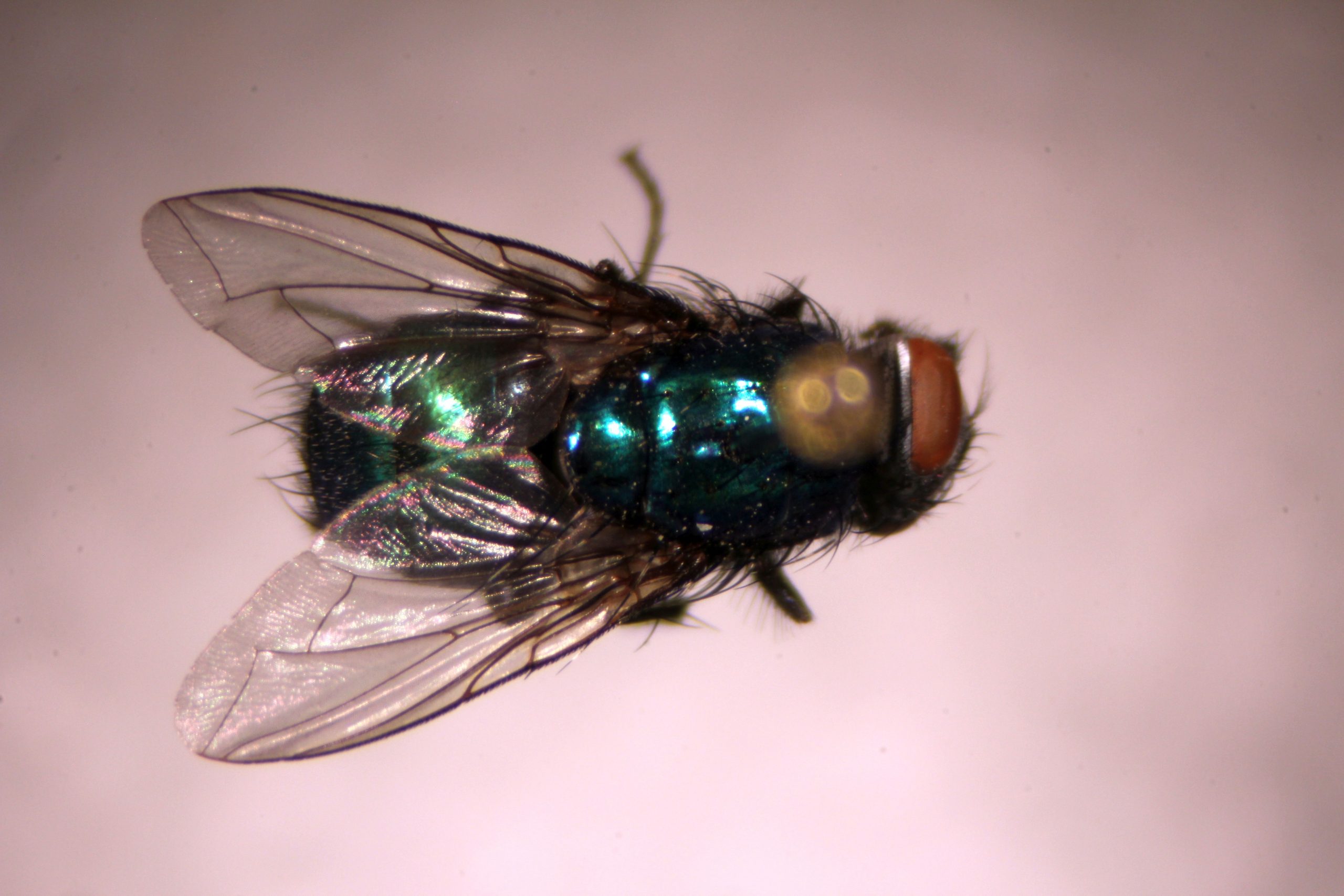
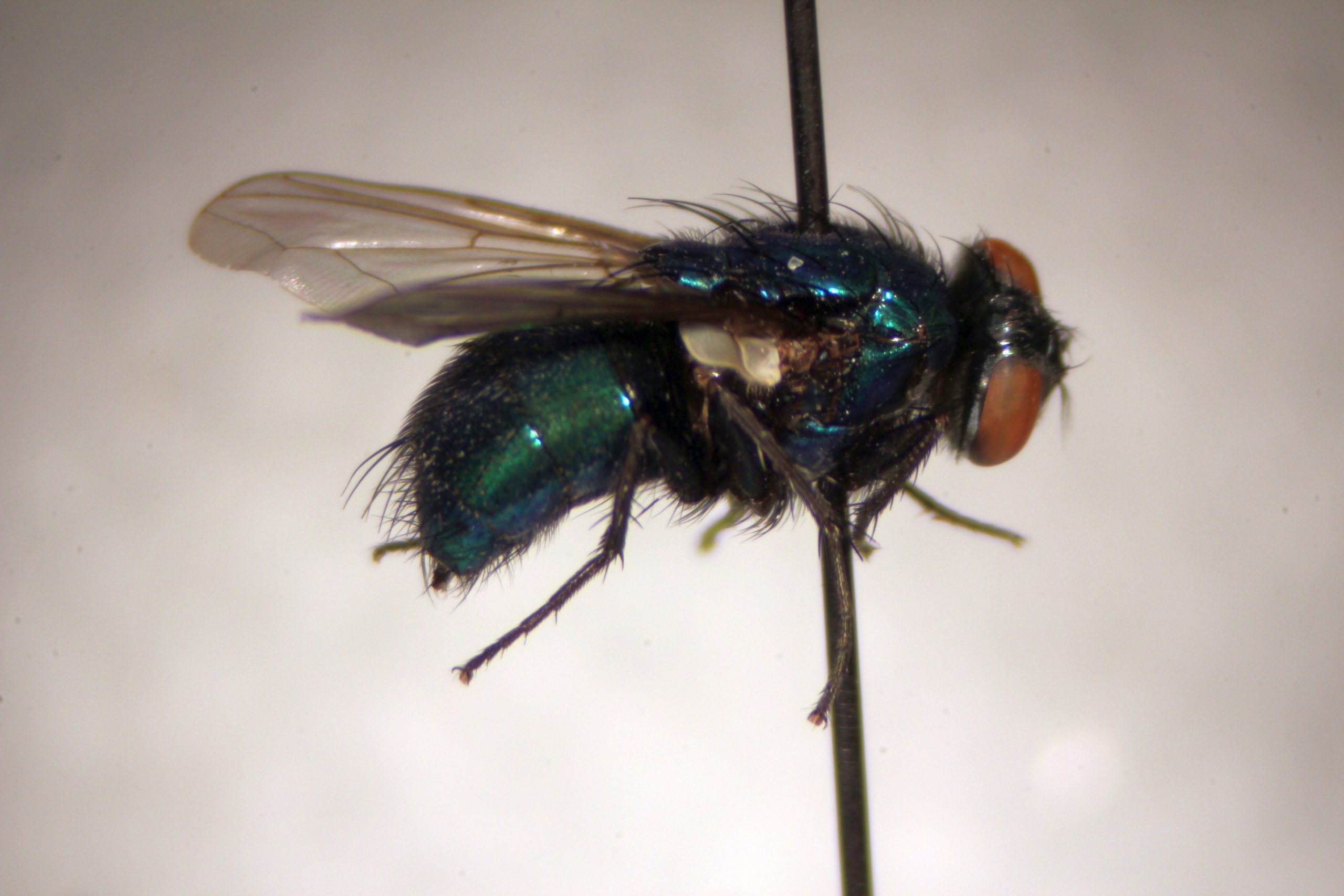
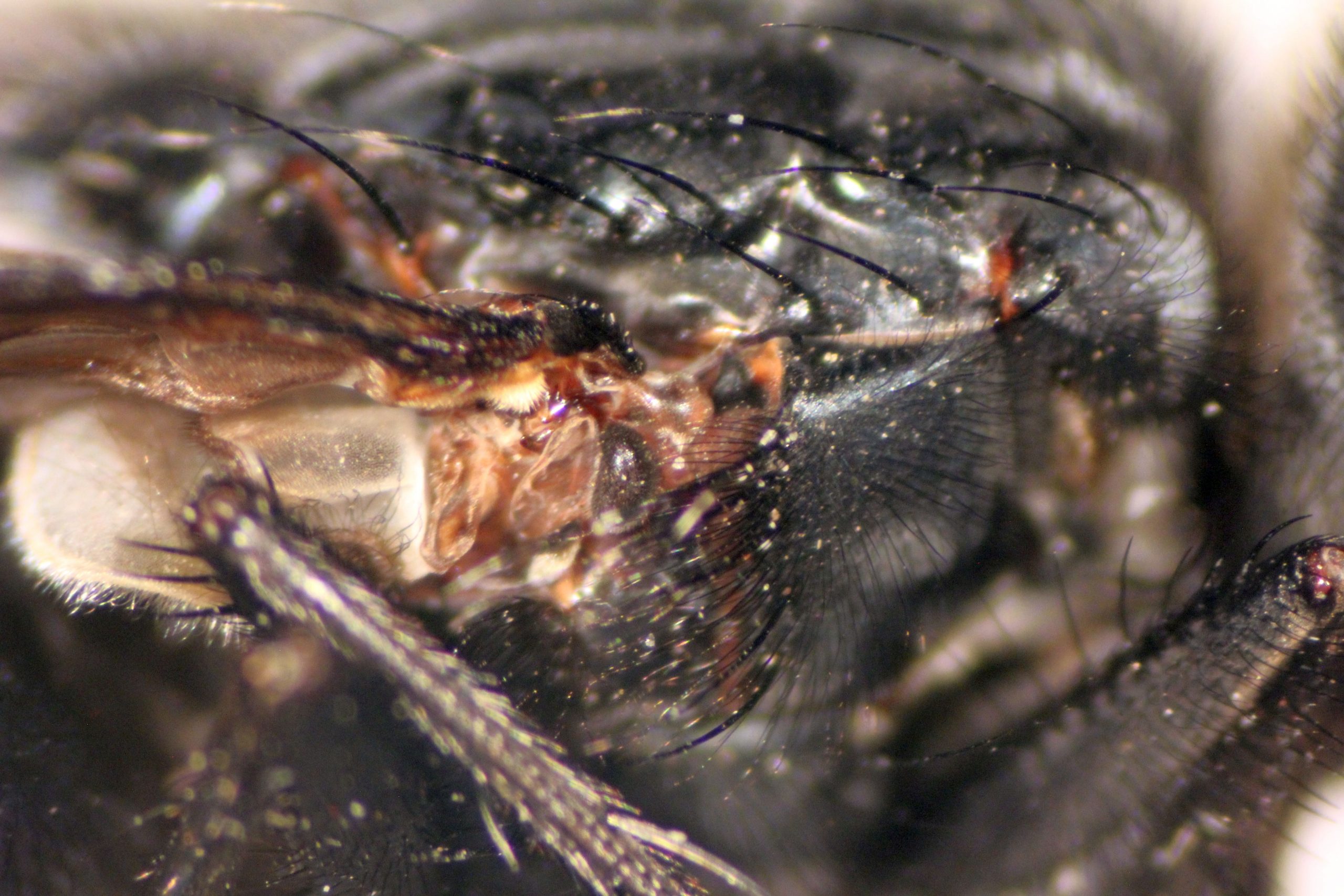
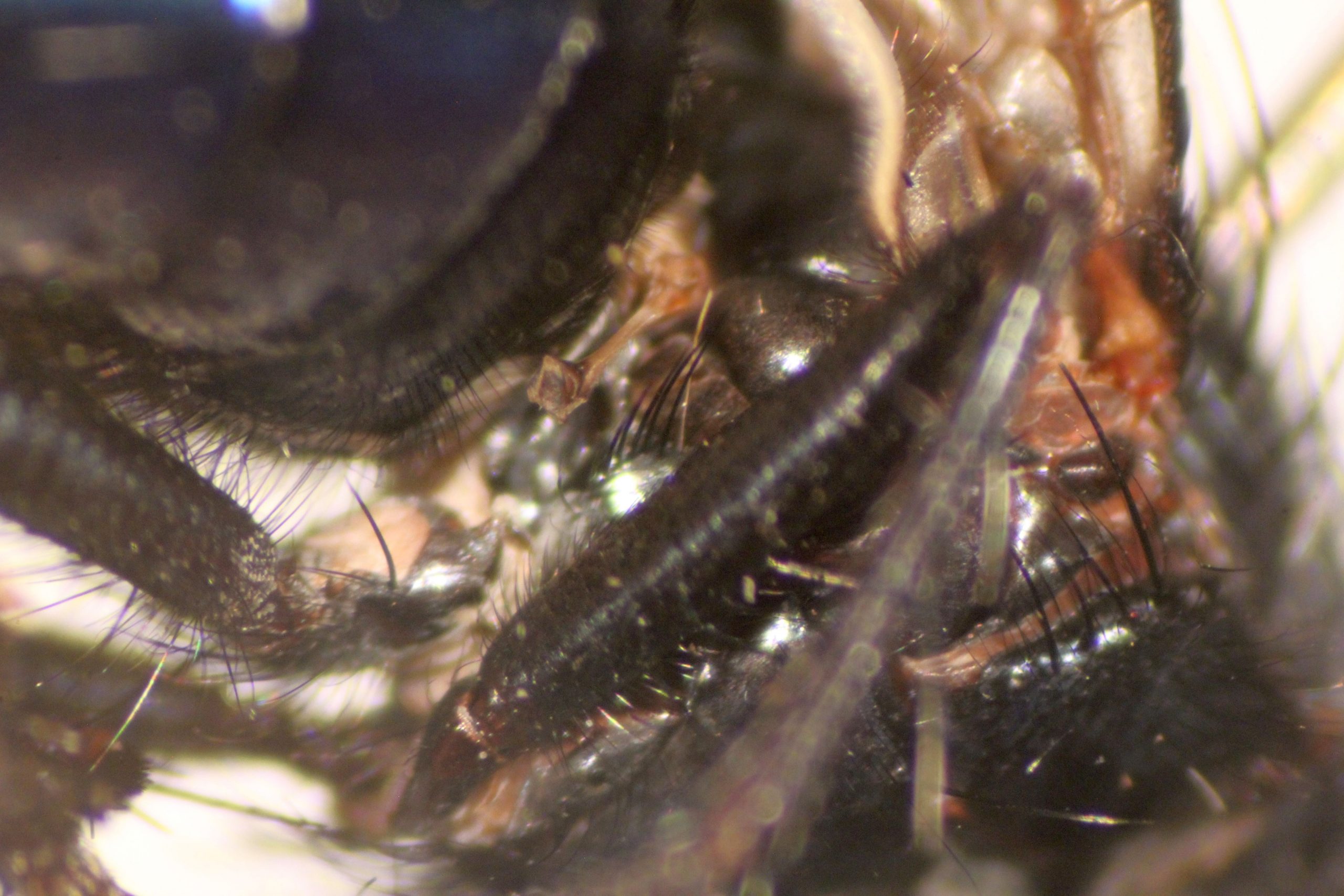
Sarcophagidae
Sarcophagidae are the flesh flies. They occupy a wide range of habitats, including flesh (usually decomposing), dung, wasp nests, and pitcher plants. Some species have larvae that are parasitoids of other insects. Sarcophaga aldrichi is a major parasitoid of forest tent caterpillar larvae. It has also earned the name “friendly fly”, because of its habit of sitting on vertical objects, including humans.
Most adult Sarcophagidae are striped grey and black flies. Like the metallic Calliphoridae, they have both a greater ampulla and a row of bristles on the meron.
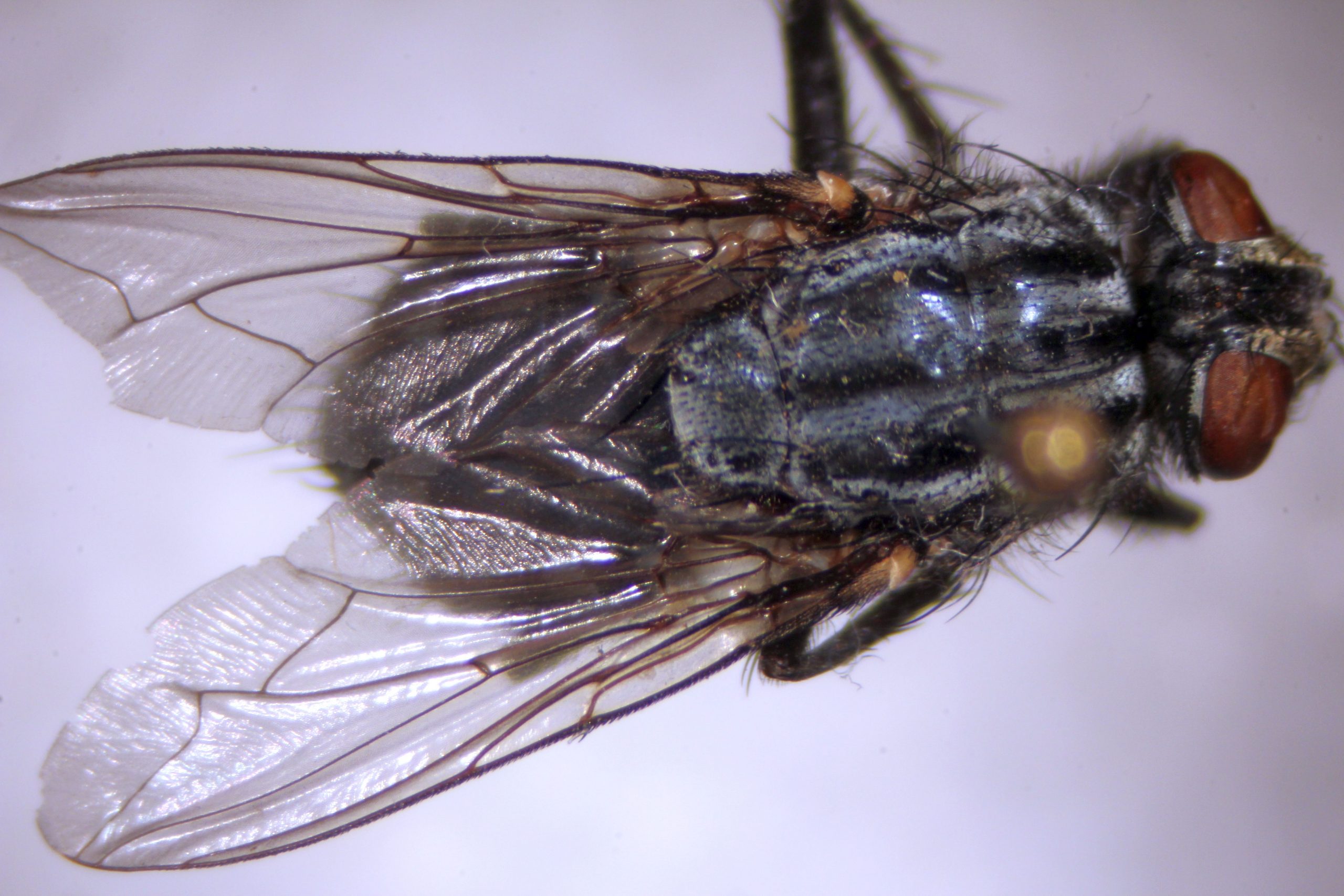
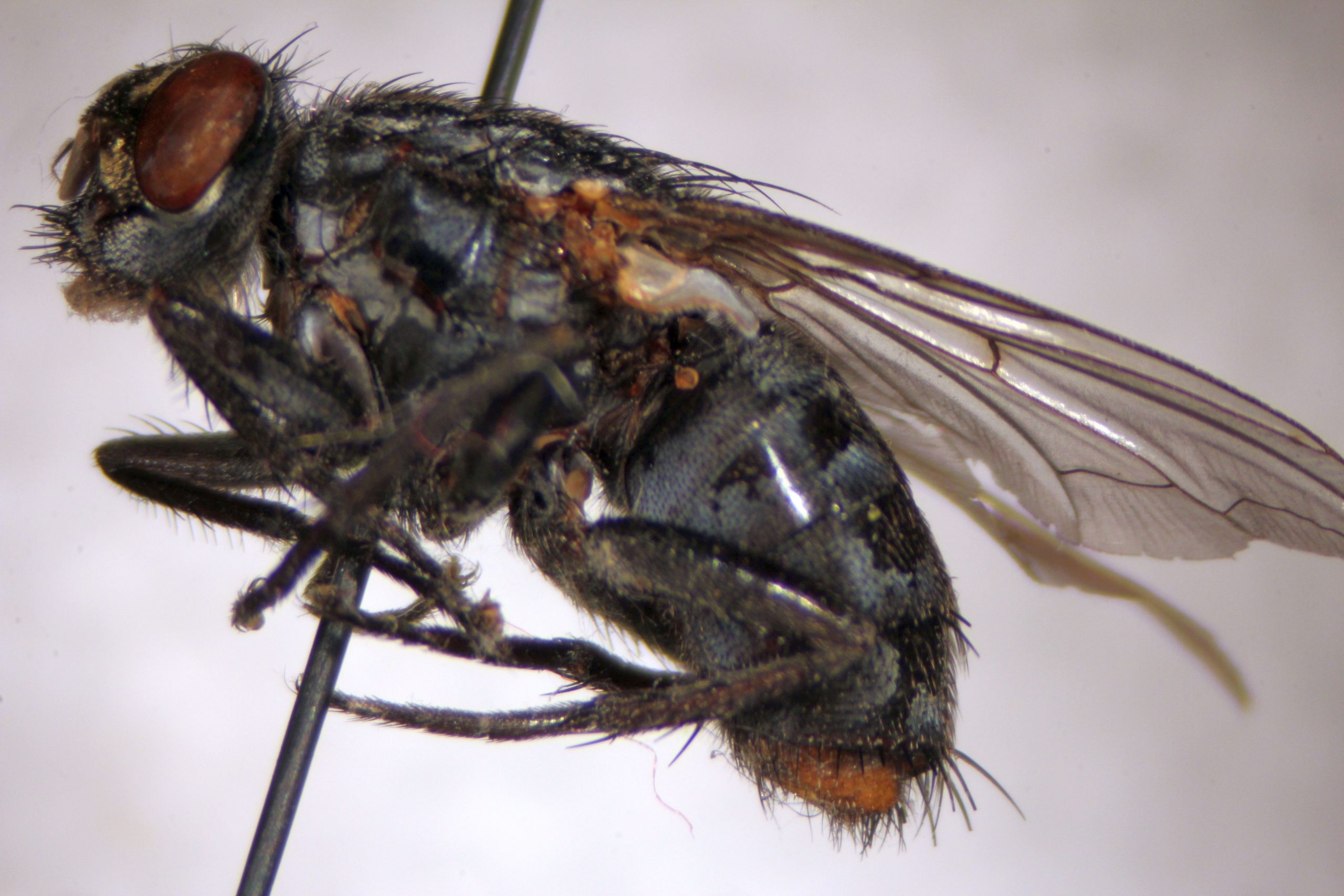
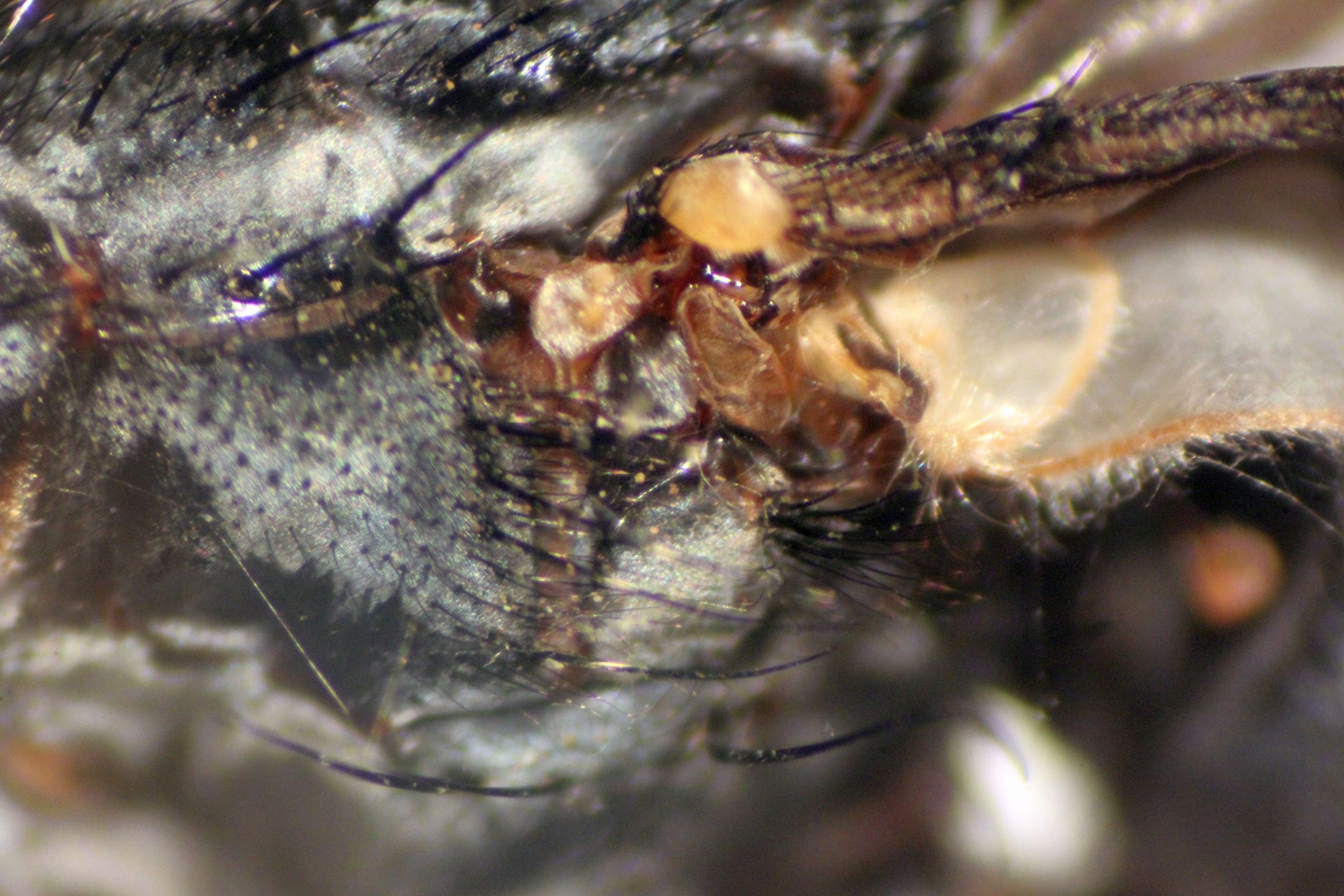
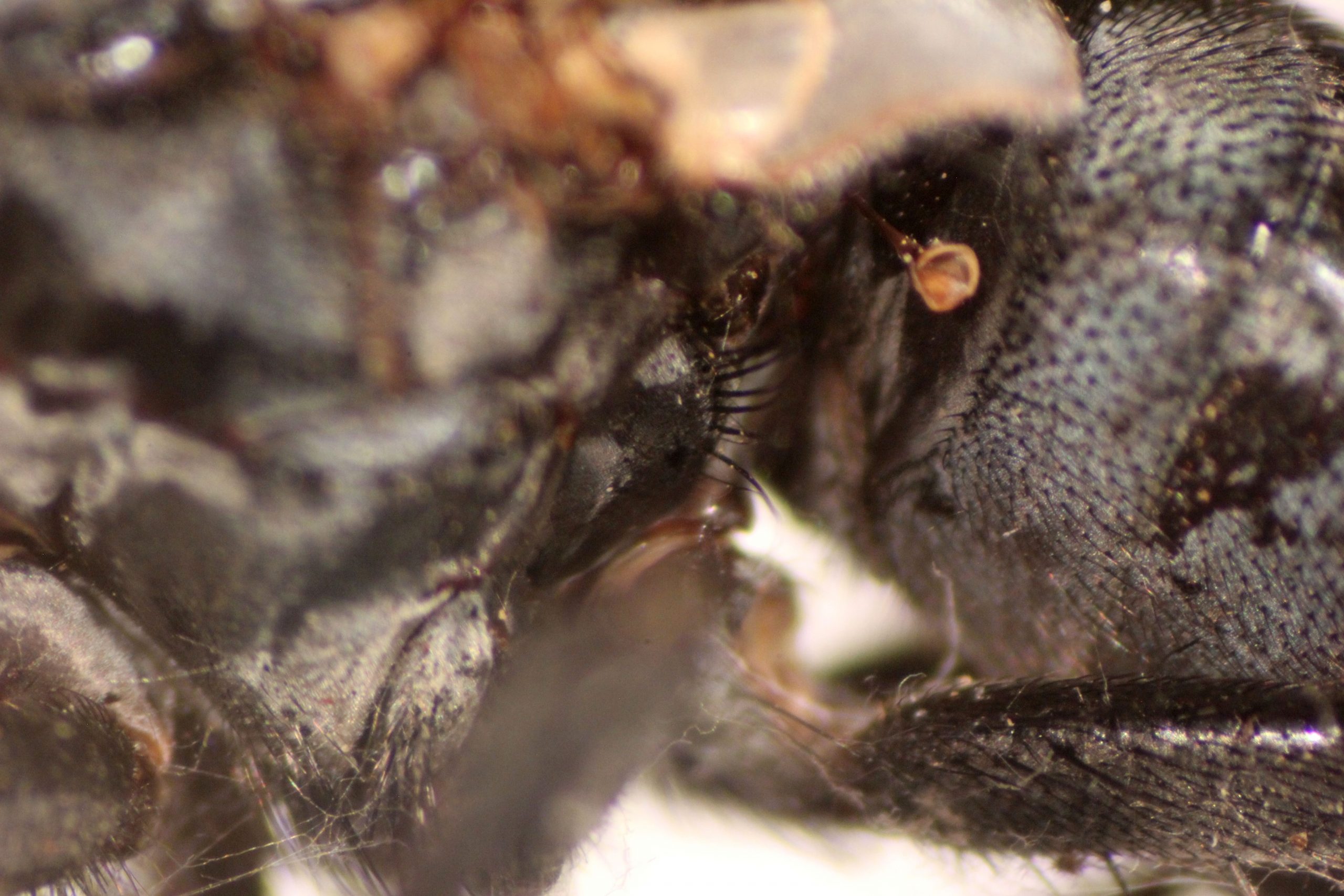
Tachinidae
Tachinidae, or tachinid flies, is among the largest families of Diptera, with about 8200 species worldwide and about 1300 in North America. They are important parasitoids of other insects, and species tend to have a limited host range . Adults tend to very bristly and robust flies. Like the previous two families, they have a greater ampulla and a row of bristles on the meron; the postscutellum also bulges outwards. To see the latter feature, look from the back of the fly towards the head, between the wing bases.
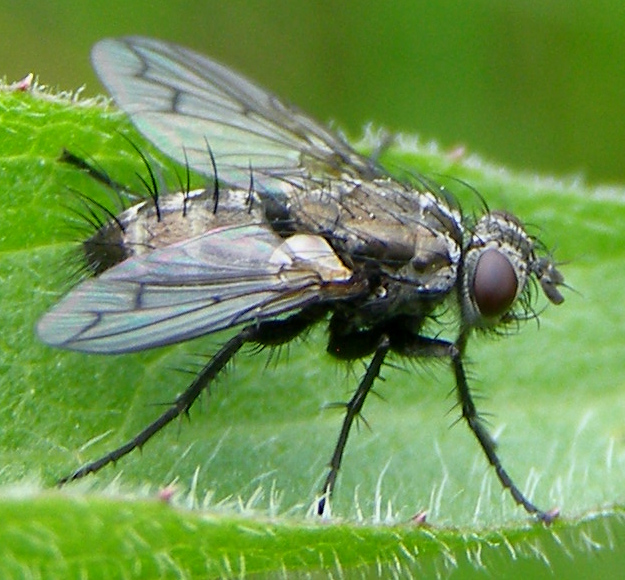
TristramBrelstaff, CC BY-SA 3.0 <https://creativecommons.org/licenses/by-sa/3.0>, via Wikimedia Commons
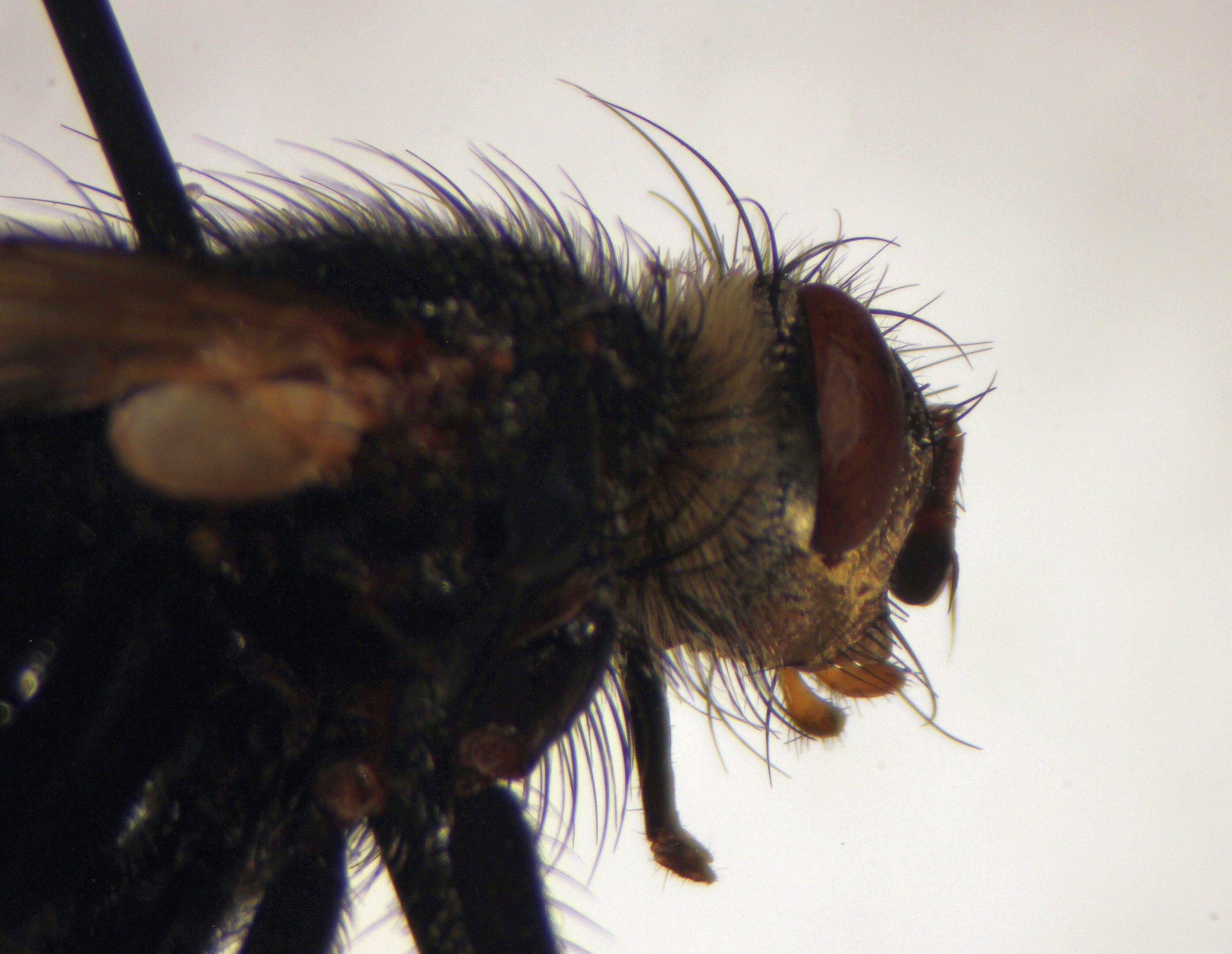
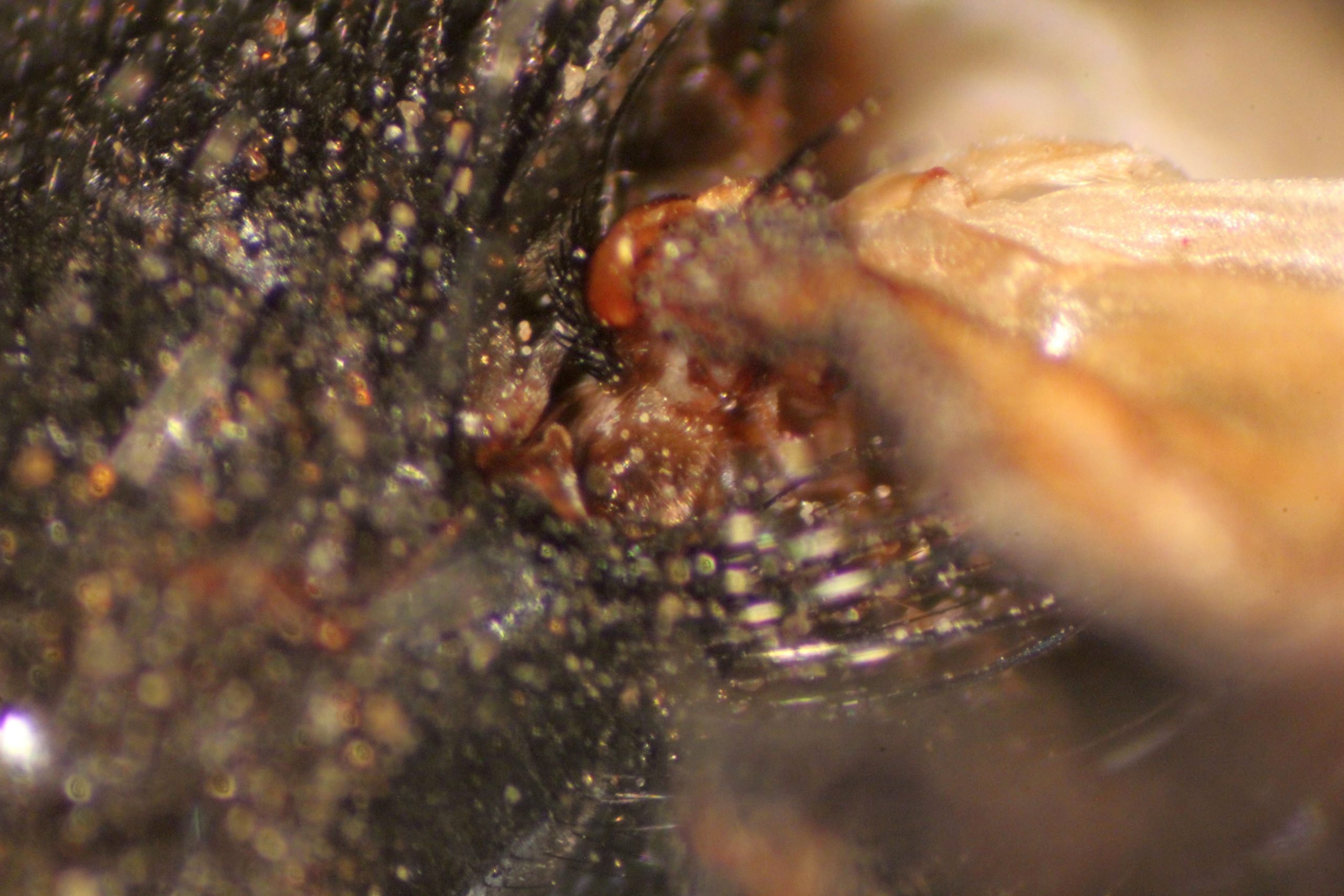
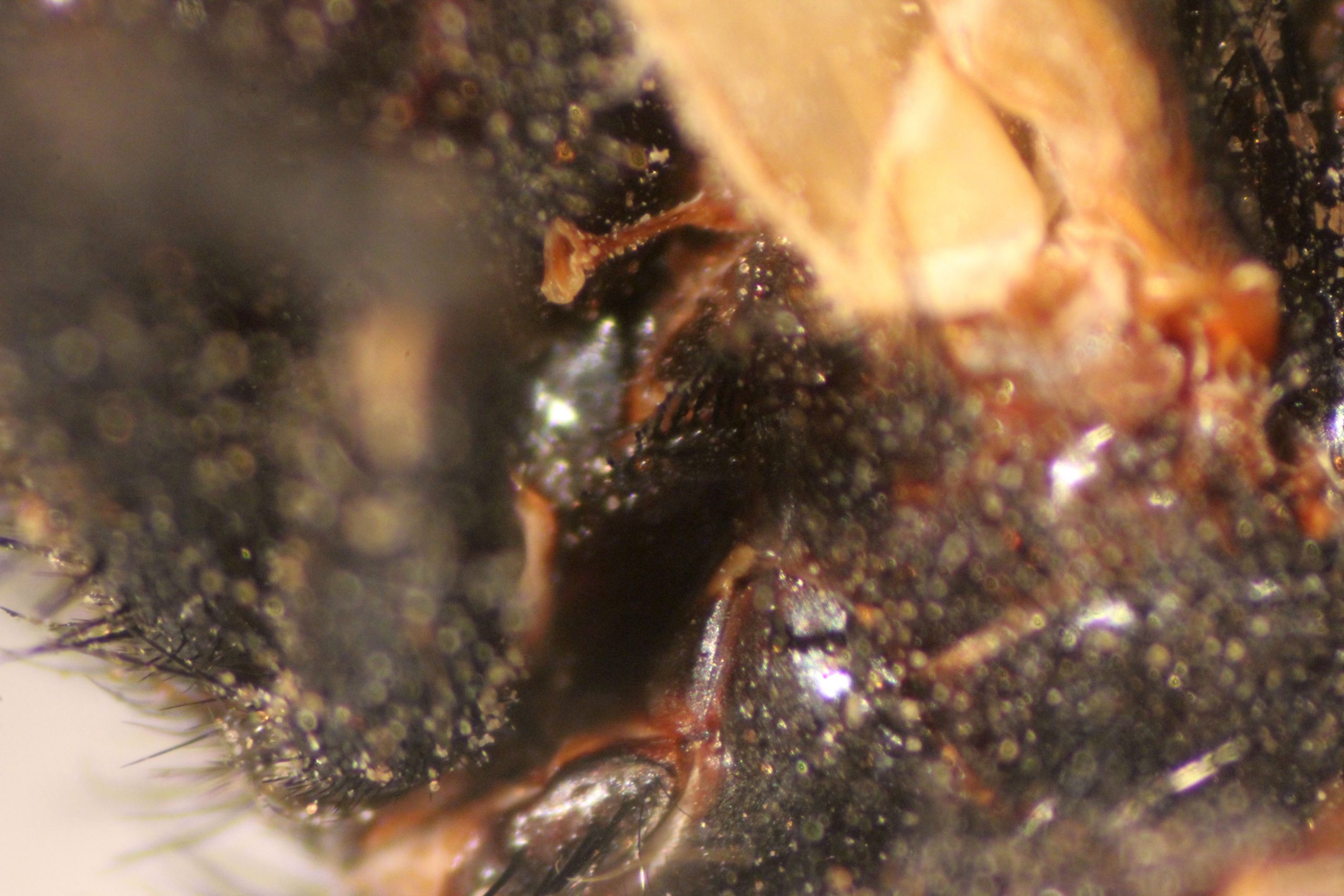
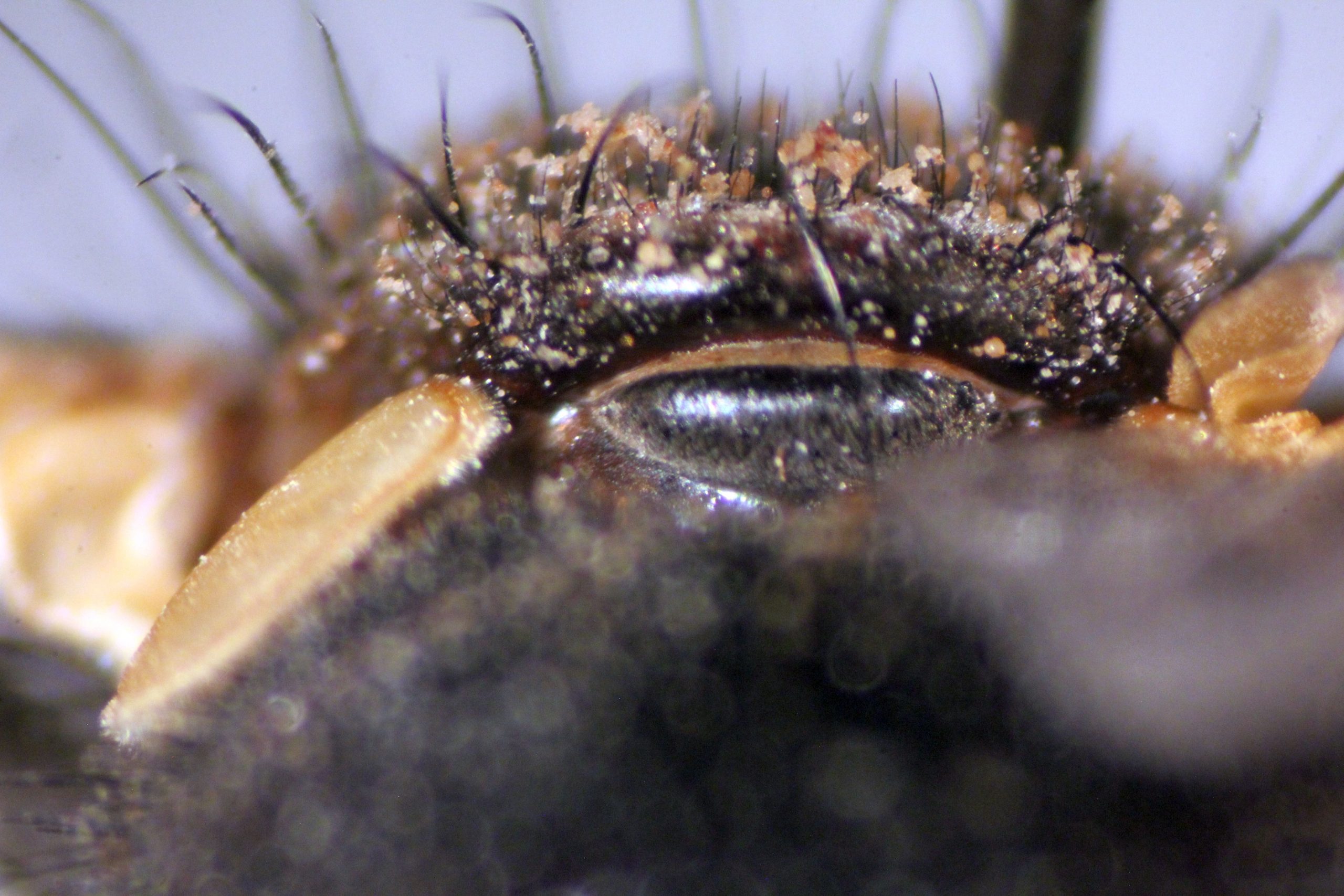
Oestridae
Oestridae are the bot flies and warble flies. Larvae are subcutaneous or endoparasites on various mammals. Small rodents with large bulges underneath their skins are often found to be carrying one or more of the large maggots. Oestridae are also important parasites of various herbivores including horses, sheep, cattle, and caribou. In tropical regions of Central and South America, there is an Oestridae that parasitizes mammals including humans. The female human bot fly, Dermatobia hominis, captures a blood-feeding insect, usually a mosquito, and lays an egg on its ventral surface. When she releases the mosquito, it will continue with its habit of feeding on vertebrate blood. When the mosquito bites a mammal, the heat from the skin surface will cause the bot fly egg to hatch, and the larva quickly burrows under the skin. It leaves a hole for the spiracle to acquire respiratory gases, and feeds underneath the skin. Myiasis (infestation by fly larvae) of incidental hosts is common in this family, so domestic animals like cats and dogs can become infested.
Adult bot flies are stout, hairy flies that resemble bees. Their mouthparts are highly reduced.
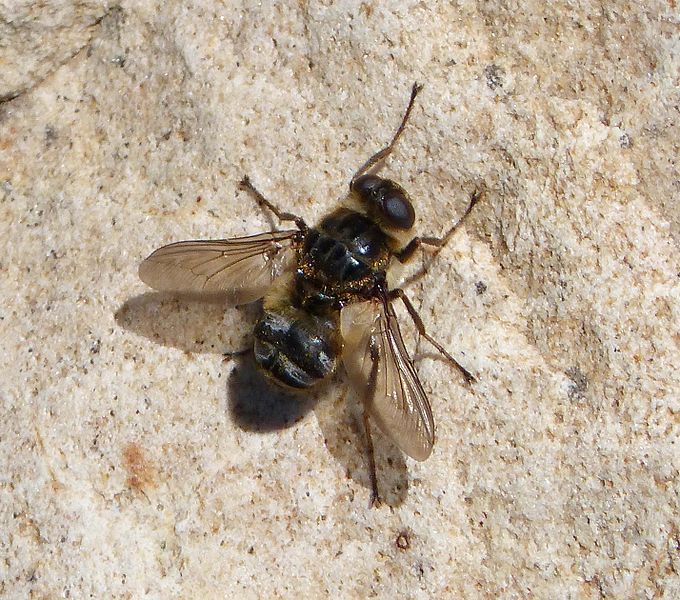
gailhampshire from Cradley, Malvern, U.K, CC BY 2.0 <https://creativecommons.org/licenses/by/2.0>, via Wikimedia Commons
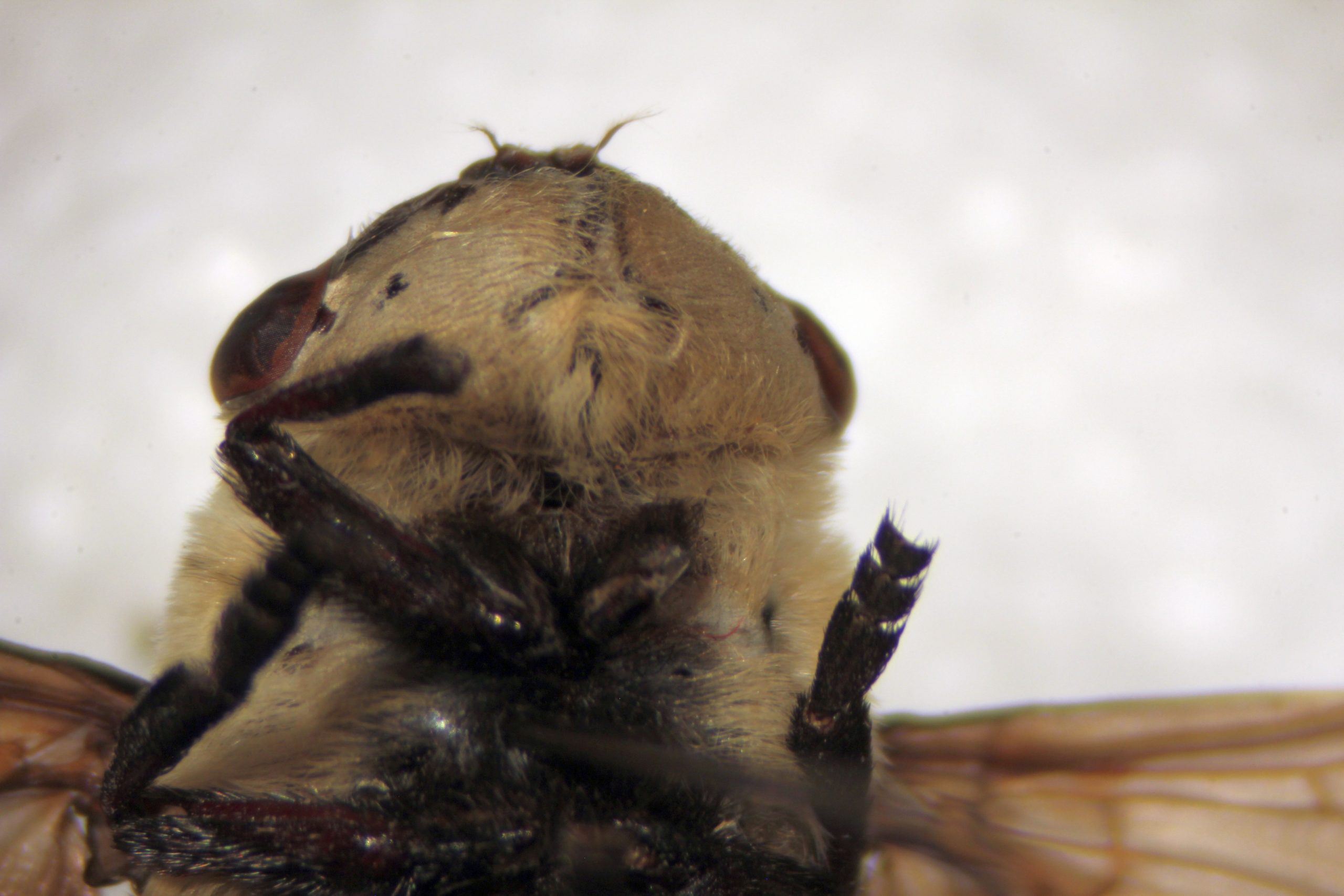
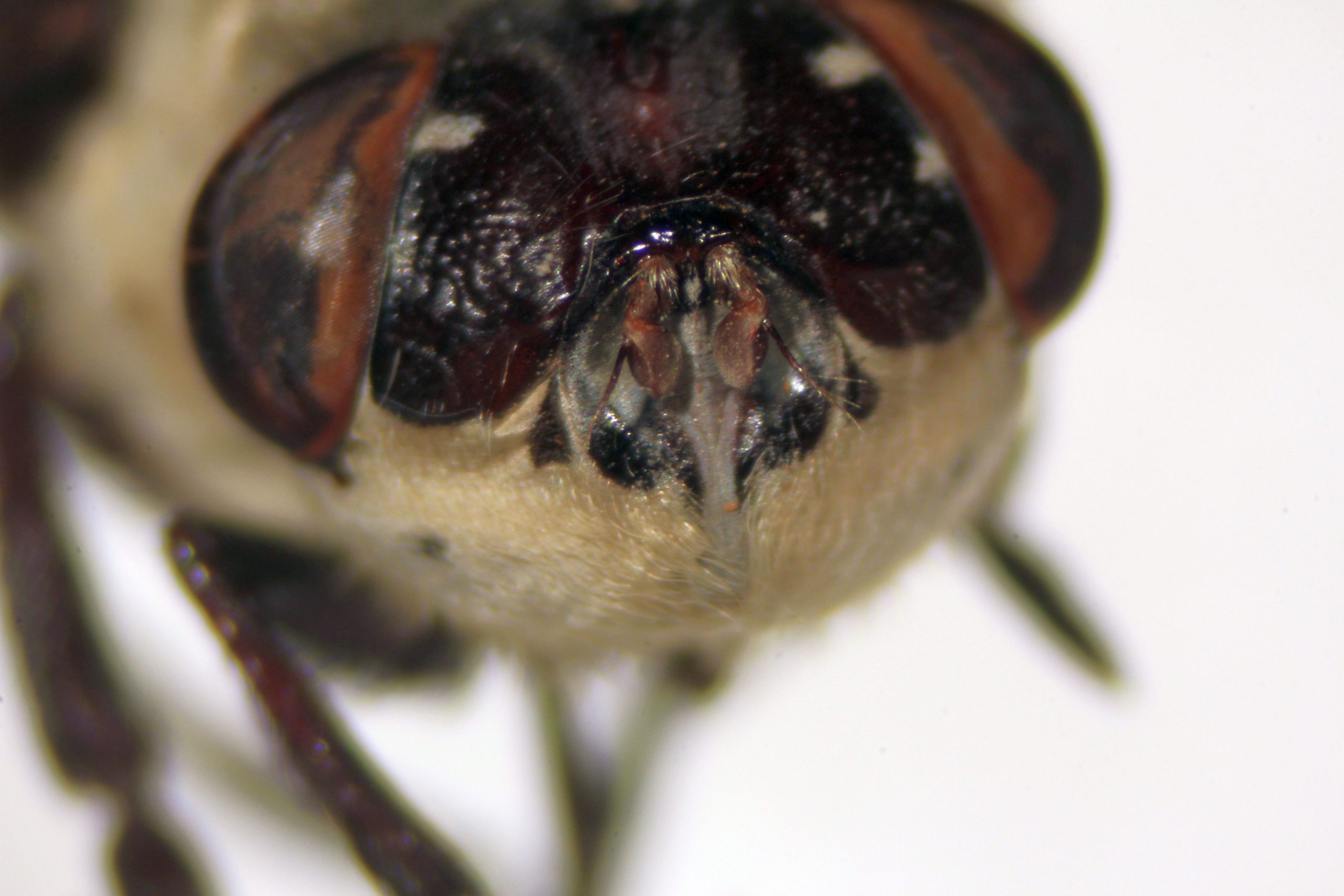
Hippoboscidae
Hippoboscidae are the louse flies. The entire family consists of ectoparasites of birds and mammals. Many species are secondarily wingless. Their bites are quite painful. Most of the larval development occurs inside the adult female’s body and, when she finally larviposits, the larva pupates almost immediately. Occasionally these are added to the collection, either by researchers working on birds, or from birds freshly-killed in window-strikes. They have a peculiar, rapid, jittery movement.
Adults are dorsoventrally flattened, with a very tough exoskeleton to protect them from host grooming activities. The overall body shape can be quite variable depending on the species.
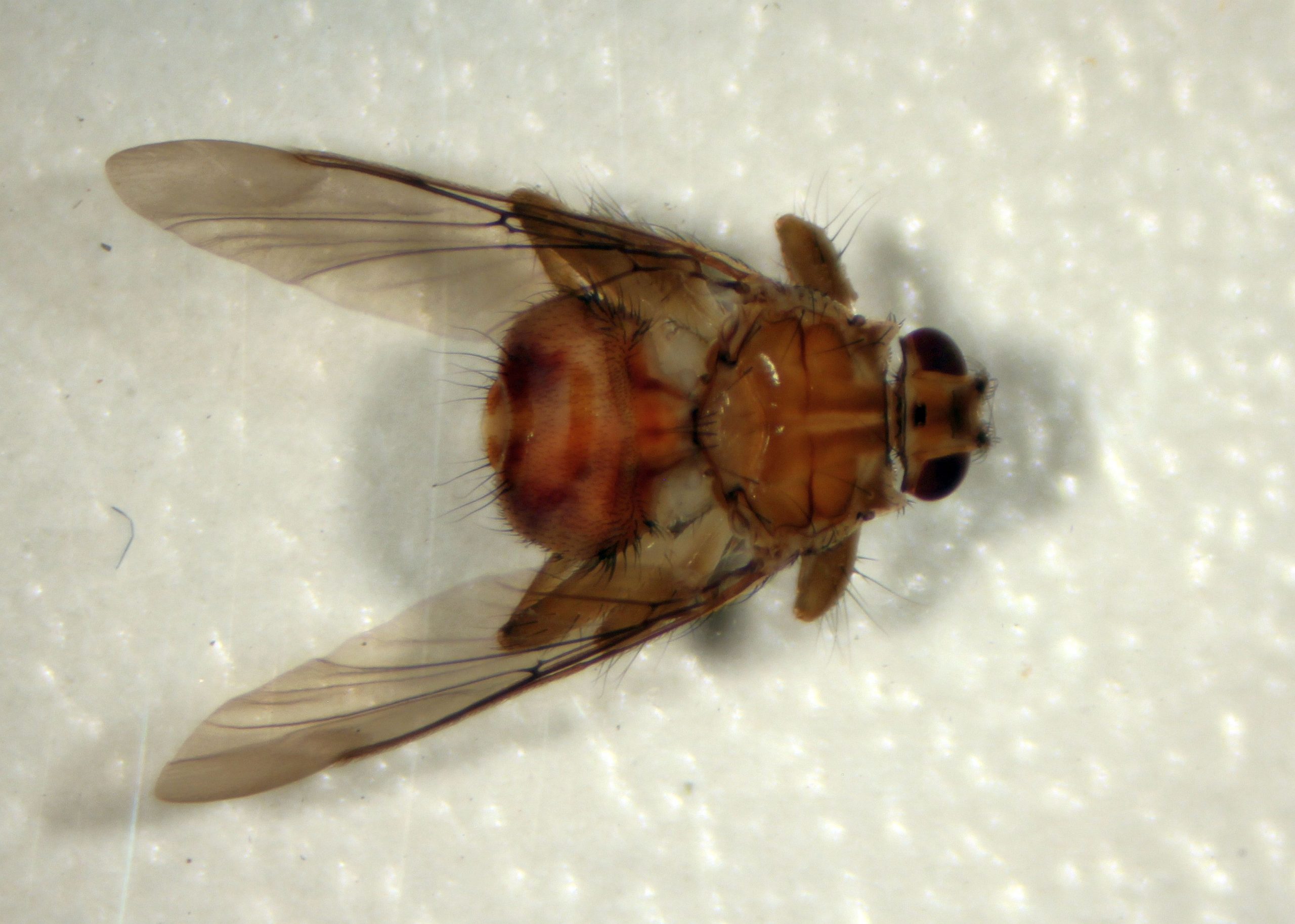
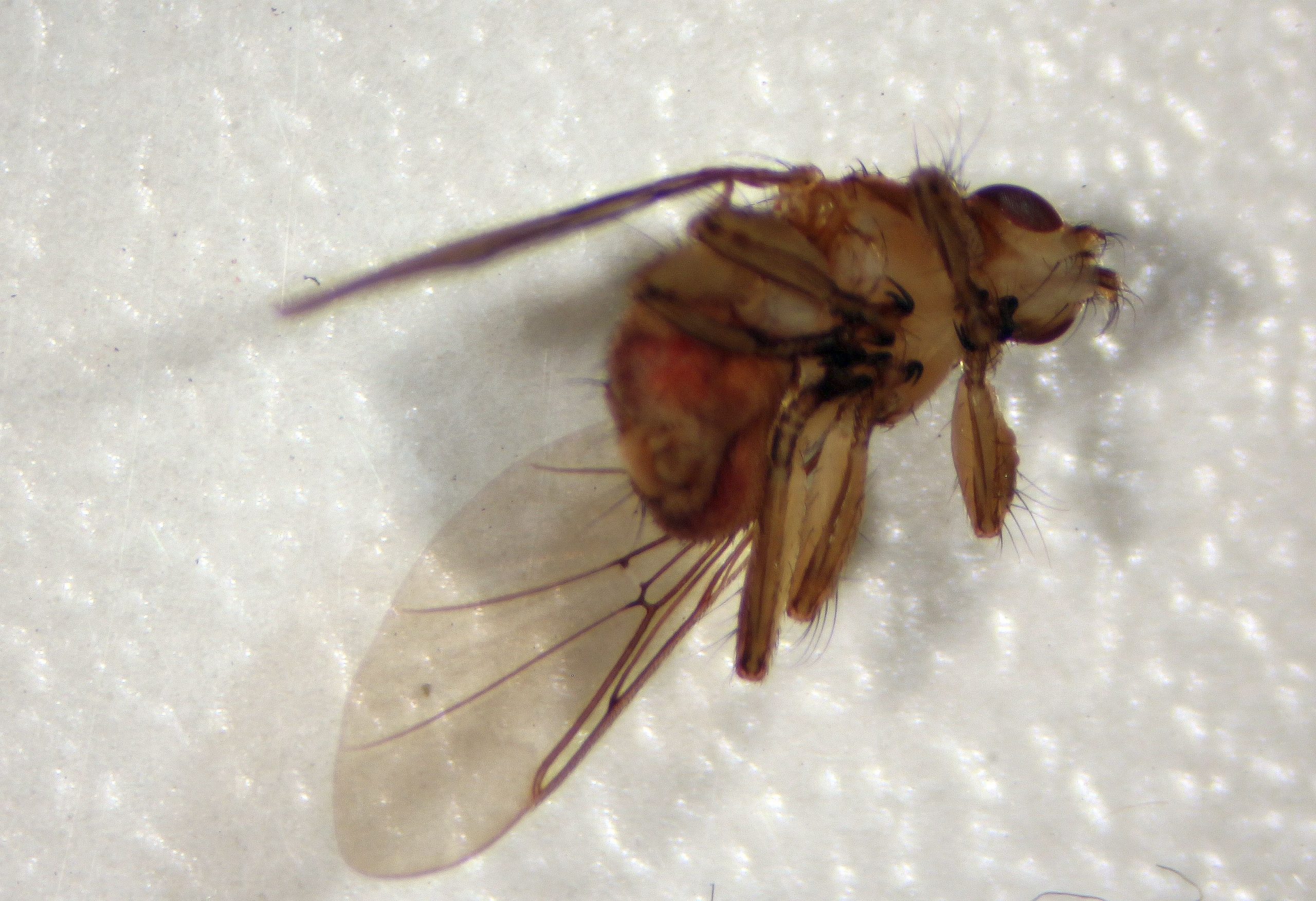


Feedback/Errata